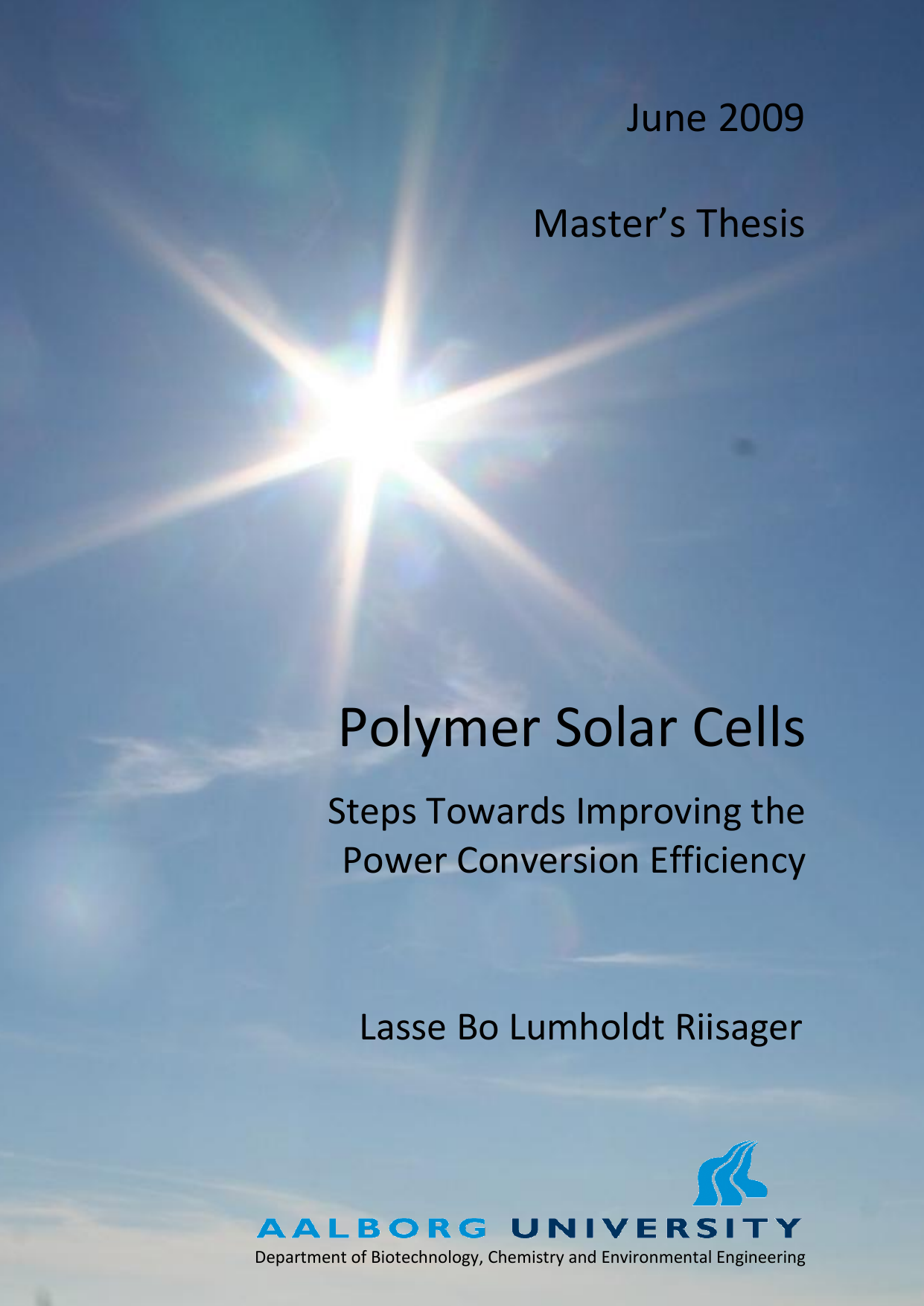
Polymersolceller: skridt mod forbedring af effektiviteten
Translated title
Polymer Solar Cells: Steps Towards Improving the Power Conversion Efficiency
Author
Term
4. term
Education
Publication year
2009
Submitted on
2009-06-11
Pages
76
Abstract
The intent of this master thesis is to improve the power conversion efficiency of polymer solar cells by controlling the morphology of the active layer. By employing block copolymers, which are well known for their ability to phase separate in a nanometer scale, it should be possible to control the morphology. Polymers with electron donating and accepting properties were chosen on the basis of the size of their band gaps as well as the relative positions of their LUMO levels in order to maximize the solar cells performance. Poly(5,7-bis(2-thienyl)-2,3-bis(3,5-bis(2-ethylhexyloxy)phenyl)thieno[3,4-b]pyrazine) and poly(3-cyano-4-hexylthiophene) were chosen as donor and acceptor polymers respectively. None of the polymers could be synthesized due to problems with the synthesis and purification of the monomers. Grignard Metathesis was attempted for polymerization, but an inactive catalyst offered no polymers. Instead, three copolymers were synthesized by Suzuki coupling. Their properties were tested with UV/vis spectroscopy, gel permeation chromatography and in polymer solar cells with [6,6]-phenyl-C61-butyric acid methyl ester as electron acceptor. Of the three polymers the novel polymer of 9,9-dioctylfluorene-2,7-diboronic acid bis(1,3-propanediol) ester and 5,5’’-dibromo-3’,4’-dinitroterthiphene resulted in the highest efficiency of 0.011 %
Hensigten med denne kandidatafhandling er at forbedre effektiviteten af polymersolceller ved at kontrollere morfologien af det aktive lag. Ved at benytte blokcopolymere, som er kendt for at faseseparere i nanometerskala, burde det være mulig er kontrollere morfologien. Polymere med elektrondonerende og elektronaccepterende egenskaber blev valg på basis af størrelsen af deres båndgap såvel som den relative position af deres LUMO niveauer for at maksimere solcellens ydelse. Poly(5,7-bis(2-thienyl)-2,3-bis(3,5-bis(2-ethylhexyloxy)phenyl)thieno[3,4-b]pyrazin) og poly(3-cyano-4-hexyl-thiophen) blev valgt som henholdsvis donor og acceptor polymer. Ingen af polymererne kunne syntetiseres pga. problemer med syntese og oprensning af monomererne. Grignard Metathesis blev forsøgt anvendt til polymerisation, men resulterede ikke i nogle polymere pga. en inaktiv katalysator. Tre copolymere blev i stedet syntetiseret ved hjælp af Suzuki kobling. Deres egenskaber blev testet ved hjælp af UV/vis spektroskopi, gelpermeationskromatografi og i polymersolceller med [6,6]-phenyl-C61-butansyremethylester som elektronacceptor. Af de tre polymere havde den nye polymer syntetiseret af 9,9-dioctylfluoren-2,7-diborsyre-bis(1,3-propandiol)ester og 5,5’’-dibromo-3’,4’-dinitroterthiphen den højeste effektivitet på 0,011 %.
Keywords
Documents
